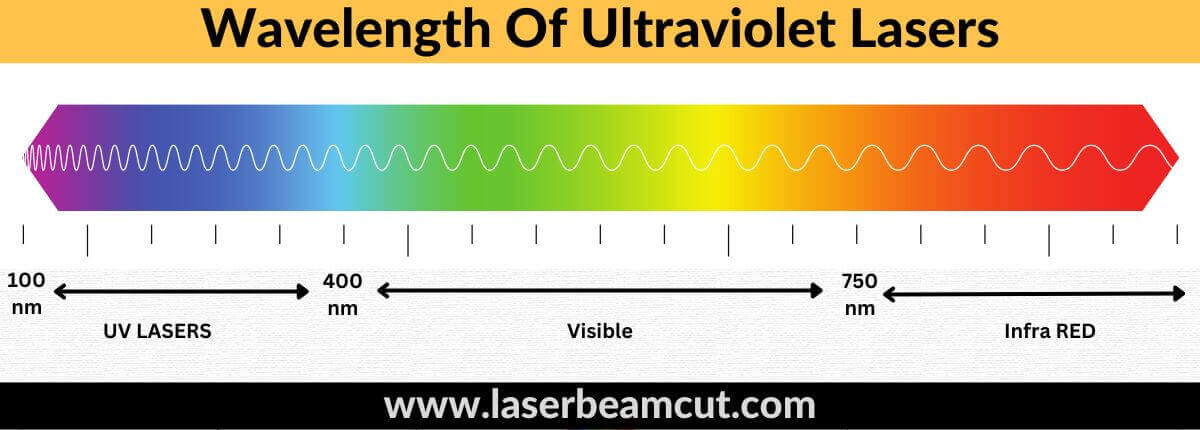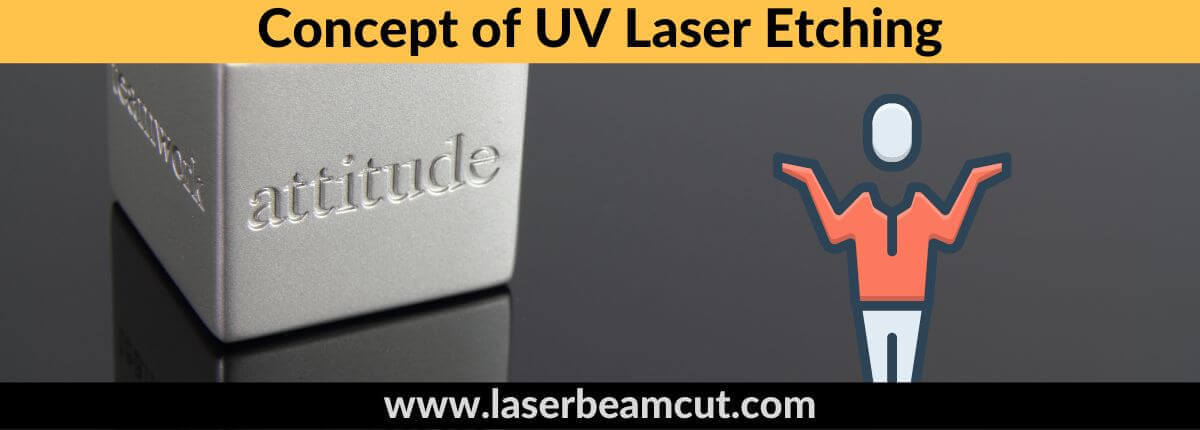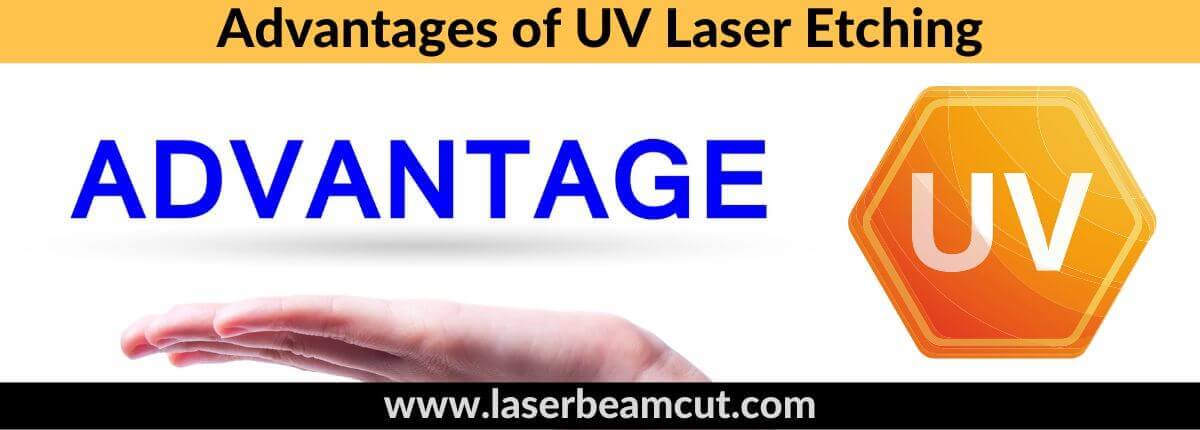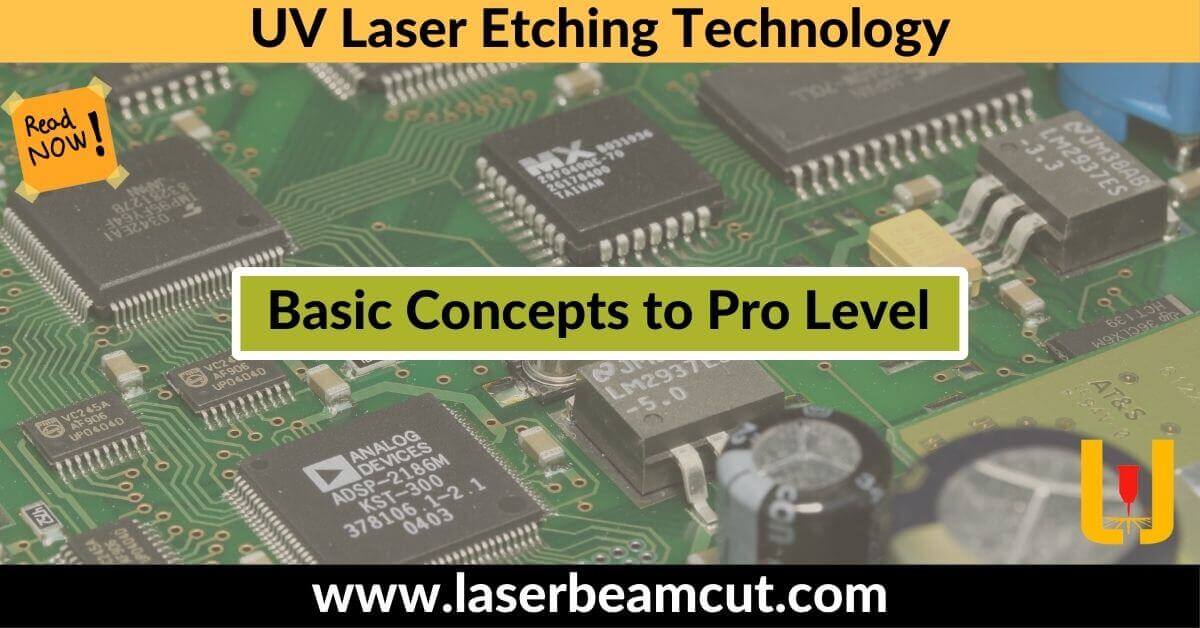We have multiple options available for labeling products for identification purposes, and one such method is UV Laser Etching. It is called “the cold labeling method”; these lasers have low wavelength ranges compared to other devices.
The process involves the melt the surface of the product using UV lasers, resulting in a distinctive design. Given the low wavelength range of these lasers, it raises the question of whether it is feasible to etch a product using this method.
The purpose of this article is to provide answers to this question. Additionally, we will explore the compatibility of UV laser etching with various materials and examine its applications. If you’re interested in gaining insights on UV Laser Etching, let’s dive in and explore it in detail.
Understanding the Wavelength Of Ultraviolet Lasers
Before operating lasers, we must clarify the concept of wavelength. Lasers emit high-intensity light rays that travel in sine waves. It refers to the distance between consecutive peaks or troughs of a sine wave.

The wavelengths of UV lasers are significantly shorter than those of visible light, making them invisible to the human eye. This unique attribute of UV lasers sets them apart and enables their diverse range of applications.
Ultraviolet Light Types Based on Their Wavelength
Three distinct regions of UV light exist based on wavelength: UV-A, UV-B, and UV-C. Each section has its unique characteristics and applications.
- UV-A has the longest wavelength among the three.
- UV-B lies in the middle of them.
- UV-C, which possesses the shortest wavelength
Understanding Their Impact on Etch Product Design
When laser etching, the wavelength of UV lasers has a significant impact on the outcome. The main task of UV devices is to melt the surface of the product and create intricate designs.
However, it is crucial to note that UV lasers with low-range wavelengths; may not generate sufficient heat to melt the hard materials effectively. Nevertheless, certain materials, such as UV laser PCB etching (printed circuit boards), are ideal for Ultraviolet lasers to etch it by Laser micro-machining process.
Basic Concept of UV Laser Etching
UV laser etching is the one way to label our products. We can etch products with various laser machines such as fiber and CO2 lasers. But why do we consider UV lasers for these tasks?

UV lasers facilitate cold etching, making it the simple answer to why they are preferred. It means that the product is safe from heat during laser processing. Therefore, we use this method to etch materials that require a non-thermal approach.
What sets laser etching apart from marking and engraving processes?
It is possible to use one machine for etching, engraving, or marking a product, regardless of the label product you use. Machine’s operational methods distinctions set them apart. Different types of lasers are utilized based on the design limitations of each process.
- UV laser etching involves melting the product surface to create the desired design.
- The UV laser engraving evaporates the product surface and leaves deep marks.
- There is no material removal involved with the UV laser marking process. It simply transfers a design onto the surface of a part.
- UV laser cutting uses high-power beams to split apart.
You should now be able to differentiate between etching, marking, and engraving processes. Now, let’s discuss the compatibility of materials with UV lasers.
Material Compatibility with UV Lasers
It is possible to etch various materials for laser ablation; using different lasers type. But UV lasers are not generally recommended for this purpose.
There may be situations where a product’s physical or chemical properties require a safer etching method. And in those situations, UV laser ablation may be considered. It is particularly relevant for sensitive materials that may be prone to damage when subjected to the high wavelength of other lasers.
UV lasers can easily etch plastics, PCB boards, paper, and other materials. Below are examples of etched designs on different materials.

Advantages of UV Laser Etching
Ultraviolet lasers give numerous advantages to etch designs. Few of them are
- High precision etching
- Safe for sensitive materials
- No heat damage
- Ideal for laser surface treatment and modification
- Versatile for various materials
- Detailed and intricate designs
- Permanent Labeling method that does not fade off over time
Summary
This article explores the inside knowledge about UV laser etching. It also discusses the various other laser operations, marking, and engraving. An essential aspect is the critical role played by the wavelength of lasers in defining their capabilities.
Ultraviolet lasers produce low heat due to their lower wavelengths than fiber and CO2 lasers. Due to this, it is an excellent choice for materials that are sensitive to thermal effects.
Laser Experts generally do not refer to it. UV laser etching finds its ideal application in specific scenarios, such as the precise etching of PCB boards.
FAQs (Frequently Asked Questions)
1. What is the difference between UV laser lithography and UV laser etching in the context of UV laser etching?
Ans: UV laser lithography and UV laser etching differ in their purpose and applications. UV laser lithography involves creating precise patterns on substrates for microelectronics and nanotechnology.
While UV laser etching selectively removes material for engraving, surface texturing, and marking purposes on various materials like metals and plastics.
2. How does UV laser printing benefit digital printing?
Ans: UV laser printing revolutionizes digital printing with its exceptional capabilities. It utilizes UV lasers for high precision. Also, It enables faster printing speeds and superior image quality.
It offers wider substrate compatibility and the ability to print on unconventional materials. These capabilities open up new possibilities for various industries.
3. What is the relationship between laser-induced modification and UV laser etching in the context of surface alteration?
Ans: In UV laser etching, laser-induced modification selectively alters a material’s surface properties. It includes changes in texture and chemical composition.
The process involves controlled laser ablation or other laser-based methods. The result is the creation of permanent modifications on the material’s surface.

